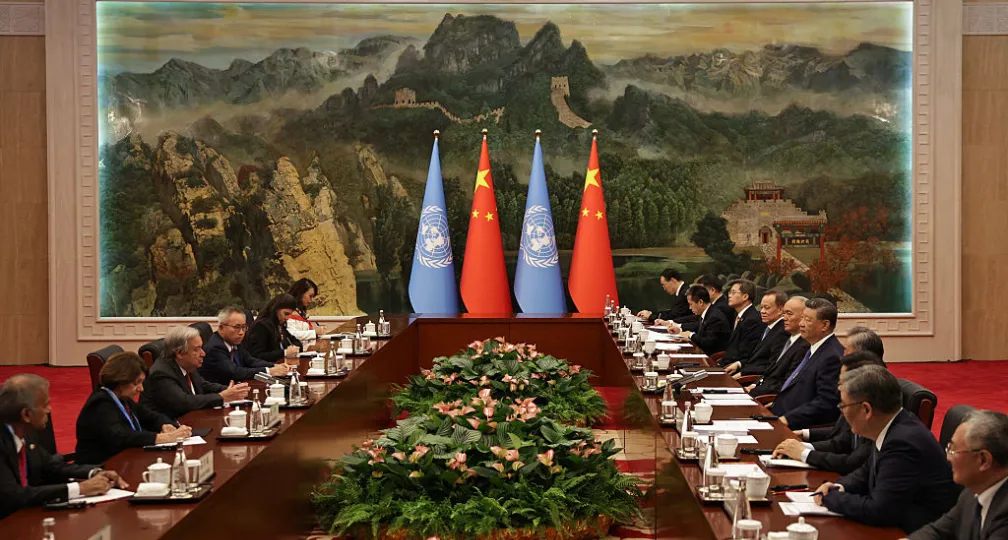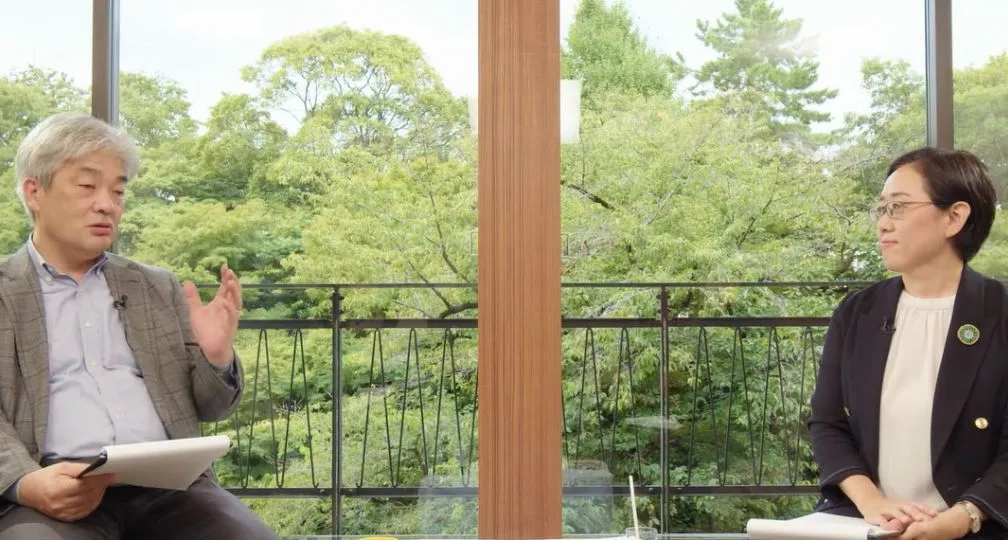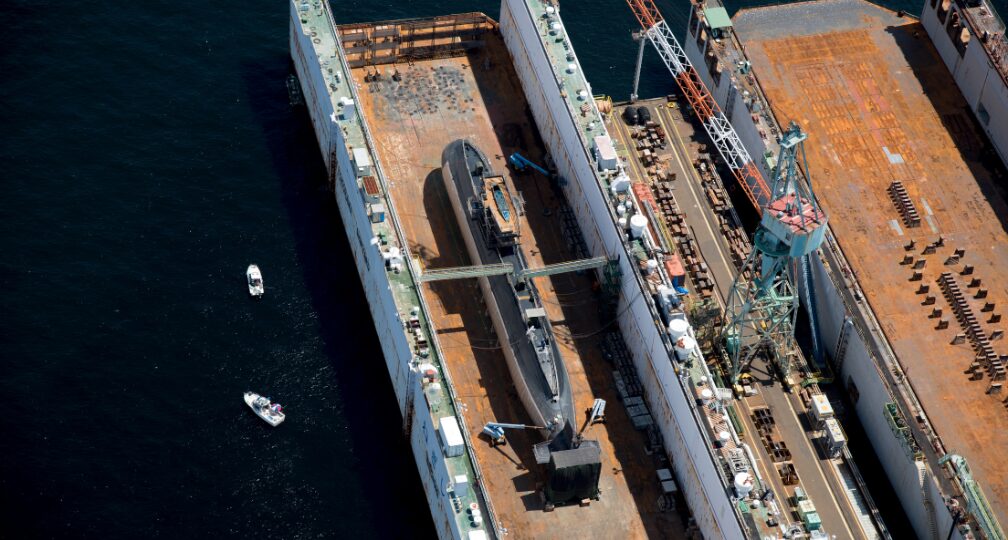How Can We Make the Argument on Tax Increase for Strengthening Defense Capabilities Persuasive?
On the same day as the release of the three strategic documents, an interim conclusion was reached on the direction of taxation measures, which had been in dispute. This was embodied in the announcement of the Tax Measures Revision Outline by the ruling parties. The Revision Outline states that (1) the tax increase will be implemented in stages over several years toward FY2027 and that more than 1 trillion yen will be secured in FY2027 through this taxation, (2) taxation will be carried out by adding certain extra rate to the corporate tax rate, adding a new 1% additional income tax rate while reducing the special income tax rate for reconstruction from the Great East Japan Earthquake by 1%, increasing the cigarette tax rate, and (3) the tax increase will start in an appropriate timing in FY2024 or later[1]. As a precondition for this, Prime Minister Kishida’s press conference on the same day indicated that three-fourths of the necessary financial resources would be provided by non-tax measures including other government expenditure cuts, utilization of surpluses of annual account settlements and non-tax revenues, while the remaining one-fourths (over one trillion yen) would be provided by the tax increase[2].
However, some cabinet members as well as ruling party politicians voiced opposition to these policies, and the decision on the details of the tax increase including the specific timing of taxation was postponed to the next year’s Tax Measures Revision Outline.
It is a universal phenomenon that tax increases are not welcomed. However, while strengthening defense capabilities is supported by the ruling parties and many citizens, why has the debate on the financial resources for such a move been so inconclusive? Critics are charging the government with a lack of adequate explanation and a poor decision-making process. But beyond such stereotyped arguments, this article will examine the structural factors behind this disapproval and prospects for the tax increase measures.
When is the time limit for raising taxes?
The first factor that can be referred to as a reason for the shaky debate on financial resources is the fact that the tax hike is not a story that will begin in the next fiscal year (FY2023). The premise is that the defense budget includes not only the expenditures for contracts for the purchase or maintenance of equipment that are completed in a single fiscal year but also those that continue for multiple years. In such cases, payments of the contracts in the first year will be small in the total amount, and when such expenses are aggregated in annual budgets, the budget structure will be built up with the payment period shifted to later years in part[3]. Conversely, in the case of a rapid increase in defense spendings such as this time, the larger the equipment or the R&D project, the more likely it is that the contract will not be completed in a single year, so even if a large number of contracts are planned to be signed in the first year, the amount of the first year’s budget will not necessarily automatically beef up. Therefore, as shown in the document submitted by the Ministry of Finance at the third meeting of the “Advisory Panel to Comprehensively Discuss Defense Capabilities as National Strength”, the budget structure will be such that the expenditure budget will increase in a stair-step manner over five years[4]. The government announced that defense spending in FY2023 will be around 6.8 trillion yen and media reports estimate that it will be increased by 1 trillion yen each year thereafter[5].
On the other hand, according to the government and the ruling parties, most of the additional financial resources from FY2023 to FY2027 as well as three trillion out of the four trillion yen that will be necessary for an annual budget after FY2027 will be covered by expenditure cuts of other government expenditures, use of account settlement surpluses, and use of non-tax revenue[6].
The breakdown of these items is not necessarily clear. However, the media report states that among an additional 17 trillion yen necessary over the next five years, the government intends to cover about a total of 11.1 trillion yen by the expenditure reform of more than three trillion yen, account settlement surpluses of 3.5 trillion yen, and the Defense Capabilities Enhancement Fund of about 4.6 trillion yen in which the government plans to pool non-tax revenue and transfers from special accounts and utilize them while the remaining 6 trillion yen will be secured through tax increases.
Based on this breakdown and assuming a gradual increase in defense expenditures over the next five years, and given the amount generated from the annual expenditure cuts and settlement surpluses are evenly distributed over the five years, and that the Defense Capabilities Enhancement Fund is used to cover the other shortfall, the deadline for tax increases may be FY2025, although depending on the size of the FY2024 defense expenditures. (It is difficult to judge unambiguously, however, because it depends on the actual amount of expenditure cuts, surpluses, and funds.) The reason why the Tax Measures Revision Outline blurred the timing of tax increases as “an appropriate timing in or after FY2024” may be based on these assumptions, the timing of the tax hike has not been decided at this point, either in FY2024 or FY2025.
In any case, if there is a grace period before the introduction of the tax hike, the incentive to make all the decisions at this time, at the end of this year, will be diminished. On the other hand, it may be perceived as politically insincere to decide first only on the three strategic documents, which are policies for increasing expenditures, but not on policies for increasing revenues. In response to the opinion that the decision on the direction of the tax hike is postponed to the next fiscal year or later, the PM said, “If it is clear that the public will have to bear the burden in the future, but we do not present it this year, it does not mean that we have fulfilled our accountability”. This is the reason why the Prime Minister responded, “I would like to present it to people in good faith”[7].
Is Defense Budget the Only Expenditure for Stable Financial Resources?
Another reason for the lack of public support for the tax hike is the fact that the argument that defense expenditures, which are to be increased, are of a continuous nature and therefore require a stable source of revenue specifically dedicated to them, has not gained much acceptance. Since nearly 30% of the current general account budget is financed by the issuance of deficit-covering government bonds, and since defense spending is not tied to any specific revenue source, theoretically less than two trillion yen is already financed by government bonds. In addition, for example, the treasury liability necessary for social security expenses, which are similarly required on a continuous basis, will amount to approximately 36 trillion yen in FY2022, of which a substantial proportion is by nature covered by the issuance of government bonds.
In this context, there is little persuasive explanation as to why only the additional increase in defense spending requires a specific tax system tied to it. Similarly, the Special Income Tax for Reconstruction is a tax with a clearly stated purpose of reconstruction from the earthquake, but it is a system that is combined with the Special Reconstruction Account, a mechanism for separating specific revenues and expenditures from the general account to ensure transparency in the flow of funds. This does not necessarily mean that the tax cutout will be more convincing. Of course, the root cause is undoubtedly the fact that the overall fiscal situation is worsening. Thus, it is important to remind of this once again and present a convincing argument on why the additional fund for enhancing defense capabilities requires a separate source of revenues as a special treatment regardless of the fact that about two-thirds of the general account budget is already financed by government bonds.
Has a Breakdown of Financial Surpluses Which Could be Utilized Been Clearly Presented?
It was indicated that expenditure cuts, utilization of account settlement surpluses, and utilization of non-tax revenues, as means other than tax increases, will be the main sources of funding for increased defense expenditure over the next five years and that they will amount to about three trillion yen each fiscal year from FY2027 onwards. But is this amount appropriate? On this point, there is no clear indication as to whether there are no other options than a tax increase of a little over one trillion yen, even if those non-tax measures are fully utilized. This is because, in addition to what has been reported in the press, the government has not provided an official breakdown of these measures. Without a clear understanding of the volume of surplus funds that can be utilized, the tax increase of over one trillion yen may not be more convincing.
Therefore, it is necessary to look at each of the reported proposals individually. But in doing so, it is important to consider whether the financial resources are a stock for one-time use or a constant flow to be used annually. The latter is a stable financial resource and makes more sense. Even if it is the former, if its size is large in one fiscal year, it can be used as a pseudo-flow for a certain period by pooling it into the Defense Capabilities Enhancement Fund and using it in a leveled manner. On the other hand, any measure that brings about a zero-sum game with other budgets does not improve the total revenue shortage.
Considering this perspective, first of all, expenditure cuts are intended to rationalize the budgets of other ministries other than the Ministry of Defense, and although a figure of over three trillion yen over five years has been reported as the estimate, this has a zero-sum nature with the budgets of other ministries and agencies and thus has its limits.
The surplus from the previous fiscal year’s budget has to be also used for the repayment of government bonds as well as for ad hoc economic measures in supplementary budgets. If this surplus is allocated to defense expenditures, it will be necessary to reduce the budget for economic measures in supplementary budgets or separately allocate funds through government bonds, so it will not necessarily be an additional source of revenue. However, if there are large surpluses such as the unexecuted portion of the budget related to COVID-19, they could be used over multiple years (in the settlement of the FY2021 budget, about 37 trillion yen of the previous year’s surplus was incorporated into the revenue, and the unused budget related to COVID-19 in the same fiscal year was estimated at about 3.7 trillion yen)[8].
The proposal to utilize the surplus in special accounts, which is considered to be the main source of the Defense Capabilities Enhancement Fund, would make relatively better sense than other options. The total amount of surpluses in all the special accounts in FY2021 is 11.4 trillion yen. However, the annual surplus is not automatically transferred to the general account, and some of it is transferred to the respective special account budgets for the next fiscal year. In addition, not all of the surplus is suitable for defense spending[9]. On the other hand, if the revenue is constantly generated every year, it can be utilized as a stable financial resource. In this regard, according to press reports, about 3.1 trillion yen will be generated from the Special Account for the Foreign Exchange Fund and about 0.6 trillion yen from the Special Account for the Fiscal Investment and Loan Program into the Defense Capabilities Enhancement Fund over the next five years.
The surplus in the Foreign Exchange Fund Special Account is derived from rising interest rates on U.S. Treasury bonds and other factors and could be utilized for some time, but since it depends on exogenous factors, it is questionable whether it can be a constant source of revenue (2.3 trillion-yen surplus in the FY2021 account settlement).
On the other hand, although the amount is not large, the Investment Sub-Account of the Fiscal Investment and Loan Program Special Account Investment Account, which is funded by investment income from the government’s holdings of NTT and JT shares, has a certain amount of surplus. The surplus, while not large, can be utilized as a constant source of revenue[10].
In addition, gains from the sale of state-owned property are also considered a source of revenue, but these are more in the nature of one-time stocks[11].
In this way, it appears that surplus funds are often utilized on a one-time basis, and not many of them can be used as a stable financial resource on a constant basis. However, if the government discloses its breakdown, the argument that the shortfalls can only be covered by tax increases will be more convincing.
Given the severe international security environment, it is necessary to avoid a situation in which the strengthening of defense capabilities is interrupted by a dispute over financial resources. In this regard, PM Kishida’s intention to explain and decide on the introduction of the tax hike along with the timing of the decision on its spending plan (the three strategic documents) seems to be in line with his words “to make clear in good faith”. If this is the case, efforts must be made to explain the necessity of the tax measures to be implemented next year or the later, in a persuasive way together with the presentation of a breakdown of other financial resources. In addition, the Defense Buildup Program calls for about 0.9 trillion-yen expenditure rationalization (cuts) out of the total cost of 43 trillion yen over five years. The Ministry of Defense will need to achieve this goal seriously, not only by focusing on capabilities to be strengthened but also by further streamlining and reviewing its legacy equipment and forces.
[1]LDP and Komeito, “The Tax Measures Revision Outline by the ruling parties. The Revision Outline” (December 16, 2022).
[2] PM Kishida’s Press Conference (December 16, 2022), https://www.kantei.go.jp/jp/101_kishida/statement/2022/1216kaiken.html.
[3]Ministry of Defense, Japan’s Defense and Budget Outline for FY2021 (December 2021), 49, https://www.mod.go.jp/j/yosan/yosan_gaiyo/2022/yosan_20220324.pdf.
[4]Ministry of Finance, “The proposal to secure financial resources necessary for strengthening Japan’s defense posture comprehensively”, Advisory Panel to Comprehensively Discuss Defense Capabilities as National Strength, Third Meeting (November 9, 2022), 1, https://www.cas.go.jp/jp/seisaku/boueiryoku_kaigi/dai3/siryou3.pdf.
[5]Reuters Japan (December 9, 2022), https://jp.reuters.com/article/defence-budget-idJPKBN2ST0LP; Kyodo (December 16, 2022), https://nordot.app/976167350447489024.
[6]Nikkei Shimbun (December 13, 2022), https://www.nikkei.com/article/DGXZQOUA132H30T11C22A2000000/; Bloomberg Japan (December 13, 2022), https://www.bloomberg.co.jp/news/articles/2022-12-13/RMTGFWDWLU6B01.
[7]PM Kishida’s Press Conference (December 16, 2022), https://www.kantei.go.jp/jp/101_kishida/statement/2022/1216kaiken.html.
[8]Ministry of Finance, Outline for Account Settlement of the FY2021 Budget, 222, https://www.mof.go.jp/policy/budget/budger_workflow/account/fy2021/kessan_03_zenntaibann.pdf; Board of Audit, Audit Report on Account Settlement of the FY2021 Budget, 489, https://www.jbaudit.go.jp/report/new/summary02/pdf/fy02_tokutei_01.pdf.
[9]Ministry of Finance, “The Outline for Settlement of the FY2021 Special Accounts” (July 29, 2022), https://www.mof.go.jp/policy/budget/budger_workflow/account/fy2021/ke040729tokkai.pdf.
[10]Except for FY2020. In the FY2021 account settlement, the difference between investment income and expenditure, not including the receipt of surplus funds from the previous fiscal year, will amount to about 100 billion yen. Ministry of Finance, “the Fiscal Investment and Loan Program Special Account Investment Account”, https://www.mof.go.jp/about_mof/mof_budget/special_account/zaitou/index.html.
[11]Nikkei Shimbun (December 2, 2022), https://www.nikkei.com/article/DGXZQOUA012KX0R01C22A2000000/.


Senior Research Fellow
Hirohito Ogi is a senior research fellow at the Institute of Geoeconomics (IOG) studying military strategy and Japan’s defense policy. Before joining the IOG, Mr. Ogi had been a career government official at the Ministry of Defense (MOD) and Ministry of Foreign Affairs (MOFA) for 16 years. From 2021 to 2022, he served as the Principal Deputy Director for the Strategic Intelligence Analysis Office, the Defense Intelligence Division at the MOD, where he led the MOD’s defense intelligence. From 2019 to 2021, he served as a Deputy Director of the Defense Planning and Programming Division at the MOD. He holds a Master’s degree in international affairs from the School of International and Public Affairs (SIPA), Columbia University, and a Bachelor’s degree in arts and sciences from the University of Tokyo. He is the author of various publications including Comparative Study of Defense Industries: Autonomy, Priority, and Sustainability (co-authored, Institute of Geoeconomics, 2023).
View Profile-
 Japan-India Defense in a Fragmenting Indo-Pacific2025.12.10
Japan-India Defense in a Fragmenting Indo-Pacific2025.12.10 -
 The “Economic Security is National Security” Strategy2025.12.09
The “Economic Security is National Security” Strategy2025.12.09 -
 India - Japan: The Glimpse of a Shared Vision2025.12.05
India - Japan: The Glimpse of a Shared Vision2025.12.05 -
 Beijing’s ‘Globalist’ Agenda Under Trump 2.02025.12.01
Beijing’s ‘Globalist’ Agenda Under Trump 2.02025.12.01 -
 Trump’s Tariffs Might Be Here to Stay – No Matter Who’s in Power2025.11.28
Trump’s Tariffs Might Be Here to Stay – No Matter Who’s in Power2025.11.28
 Event Report: The Trump Tariffs and Their Impact on the Japanese Economy2025.11.25
Event Report: The Trump Tariffs and Their Impact on the Japanese Economy2025.11.25 The Real Significance of Trump’s Asia Trip2025.11.14
The Real Significance of Trump’s Asia Trip2025.11.14 The “Economic Security is National Security” Strategy2025.12.09
The “Economic Security is National Security” Strategy2025.12.09 The long road to a South Korea-U.S. trade deal2025.11.26
The long road to a South Korea-U.S. trade deal2025.11.26 India’s Structural Reforms: Opportunities and Risks2025.11.14
India’s Structural Reforms: Opportunities and Risks2025.11.14
















